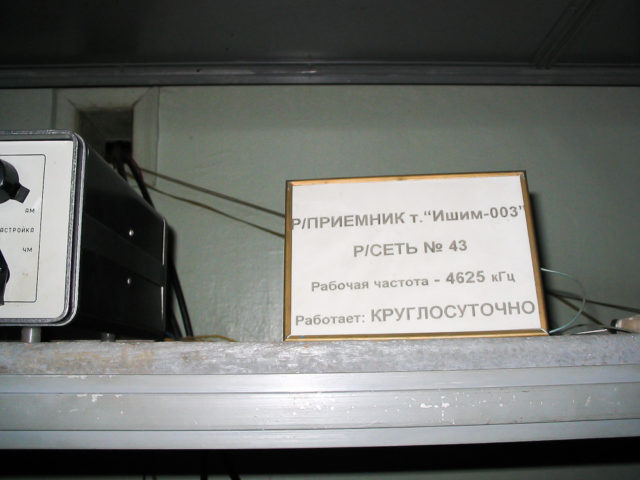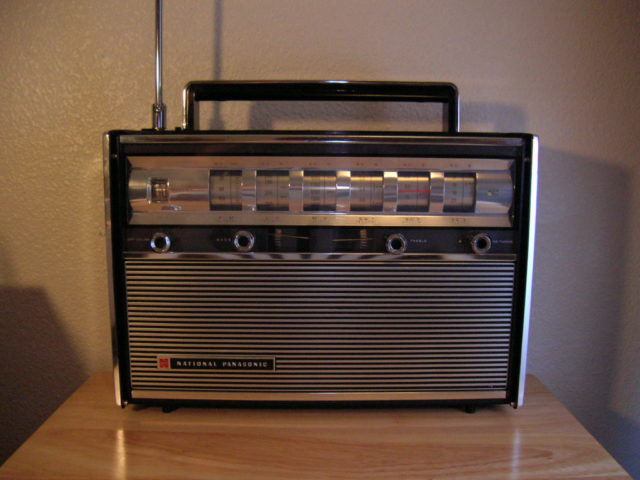It can be heard 24 hours a day, 7 days a week: a steady low buzzing broken by a sound similar to a muffled fog horn every few seconds. The crackling, static-like noise is shattered by a horn sound on the hour, every hour, and, rarely, a muffled Russian voice saying what seem to be random words and numbers. As bizarre as it may seem, this is a radio channel that thousands of people around the globe listen to quite actively. The radio station is Russia-based MDZhB, previously UVB-76, and is fondly called “the Buzzer” by its fans.
The station’s broadcast has captured the interest of conspiracy theorists and radio enthusiasts alike. The station, whose operator is unknown, has become the center of many theories, including Doomsday switches, ghosts, spies, and military use. Even with so many interested minds, the mystery has not been solved. However, possible explanations exist.
It is believed that UVB-76 initially began operation sometime during the Cold War, near the end of the Soviet Union. The radio station is known to use shortwave (which became a trend as far back as World War I for military communication), which is much longer than local radio waves. Therefore, fewer waves pass a specific point per minute. In addition, the waves have the characteristic of bouncing off charged atoms in the atmosphere, which allows them to travel farther. While this is not the common choice for a great amount of technology, it allows for long distance communication, which is popular for military, aircraft, and marine vehicles.

With the benefit of reaching listeners across the globe, shortwave radio stations were popular in times of war to communicate to spies in enemy territory, using almost unbreakable codes that were only known by the intended receivers. Such a use is possible for the initial broadcast of UVB-76. However, the reason it is still active is unknown.
Due to the history of similar stations, it is suggested that the radio station is still communicating with Russian spies in various countries. One part of this theory suggests there are encrypted messages in the buzz that only the agents can discern. However, such an assumption is widely doubted because hidden messages leave a mark on the wave, allowing others to discern this use (even if not the message itself). Such a thing has not been found on the waves sent by the Buzzer, so it is unlikely to be the use of this rarely interrupted feed.
Another suggestion is that, though it is rare, the voice that sometimes breaks the pattern is actually relaying a coded message audible to the spies. Speaking in code over shortwave radio is something that has been done since at least World War II. There is no strong evidence to suggest this cannot be the function of the Buzzer. However, if it is true, these messages are extremely rare. In addition, it would be risky to use a radio frequency that is being listened to by thousands of people.

If this were true, it would be logical for other countries to attempt to at least override the station using a higher frequency. However, no attempt has been made by any country to disrupt the broadcast, so probably the messages are not for secret agents. The gibberish may be just gibberish. Even so, such a possibility for secret communication cannot be completely ruled out. The United States arrested several Russian spies in 2010 who were listening to commands on another shortwave frequency, so this may be other than fiction.

If the words lack importance, perhaps the odd continuous buzz interrupted every few seconds by a horn-type sound is the key to understanding this phenomenon. One of the more popular theories is that the sound is the remnants of a device from the Cold War that threatened to automatically fire nuclear missiles at the United States if signs of military command ceased in Russia. Such a device helped lessen the threat of a nuclear attack due to the automatic system that would damage the United States even if Russia was fatally crippled. It is theorized that this system is still active, and that is what listeners hear on the frequency 4625 kHz.
Though a bit unnerving, the broadcast did stop a few times at the end of 2010. So, if it is a Doomsday switch, the interruption of the sound is not the signal. During the odd break in service in 2010, listeners could hear people in the background and things being shuffled around, weakening the theories of a ghost tower. Later, the station moved from its old location to somewhere new, but it is not known where. The old location is believed to be a small military post in a town close to St. Petersburg. Now the town is nearly deserted and no motivation behind the broadcast can be found, though a book was found containing past announcements. Due to the location of the tower being on a military base, most enthusiasts believe “the Buzzer” is run by the Russian military.

The military explanation certainly seems plausible, though nothing is absolute. Another clue to this is a message stated over the airwaves in 2013 that translated to “command 135 issued.” It is believed by many that this was a test for combat readiness. This drill and the previously known location of the radio station seem to support the military theory. As for why the station is constantly emitting the maddening drone and horn, it is theorized that this is to reserve the frequency for when it is needed. Such a use for this station may even explain why other countries do not block it. Of course, other countries’ lack of interception and the command that appears to be an emergency drill do not necessarily mean that the network is only for emergencies.
While it appears that there is an explanation for this bizarre radio station, there is no conclusive proof for any of the theories. It is even possible that all of the above, and other fan theories, are wrong. For now, we can only tune into 4625 kHz on our shortwave radios (or online using shortwave radio sites or dedicated “the Buzzer” sites), and wait for bizarre happenings. Since the command from 2013 and the moving of the radio station which resulted in the name changing to MDZhB, there is little else to go on, but plenty of anticipation for the next big clue.
